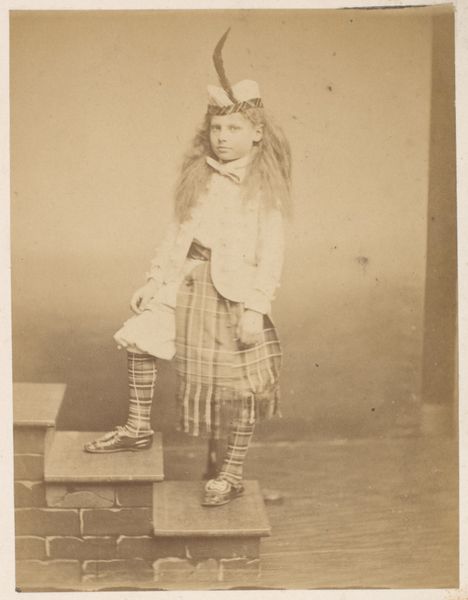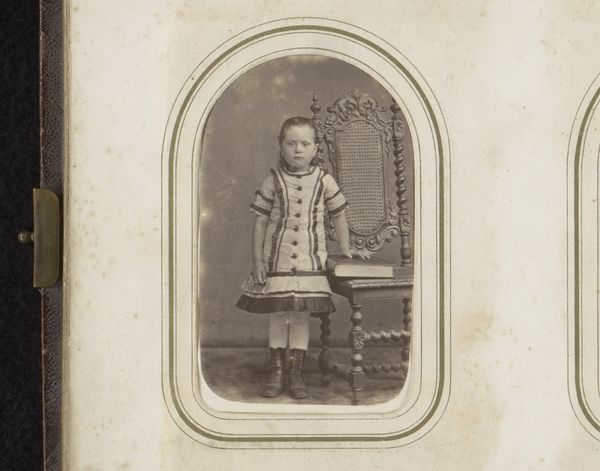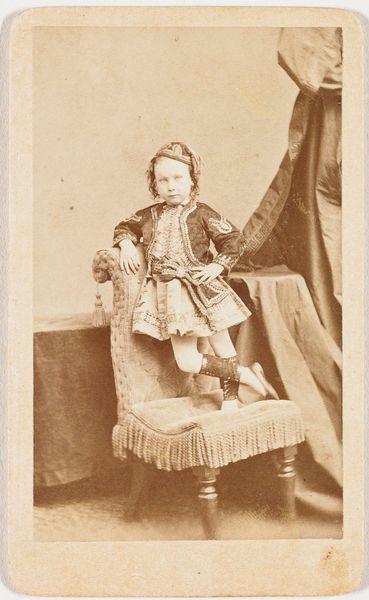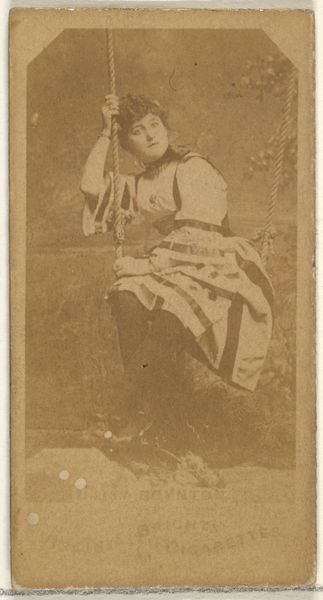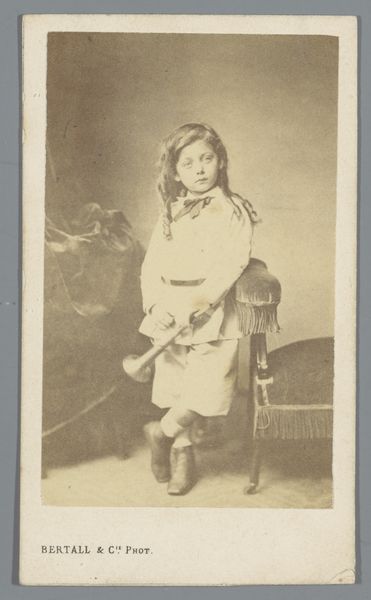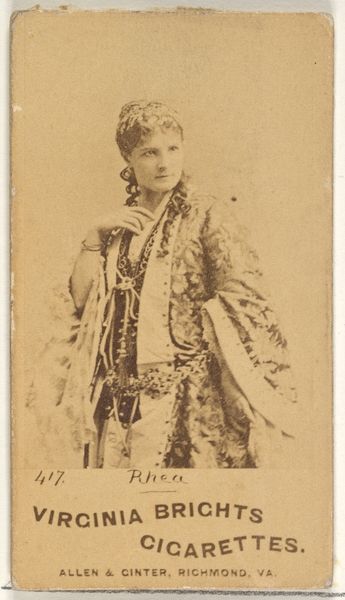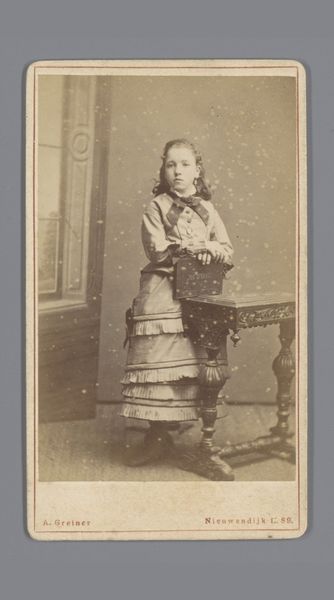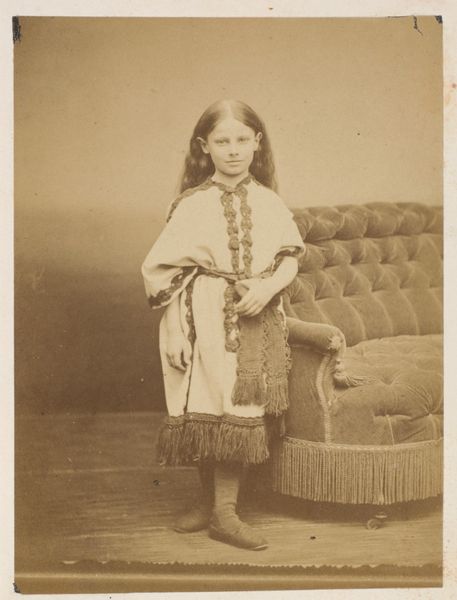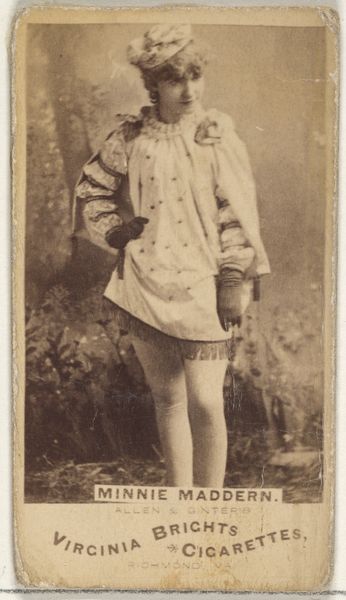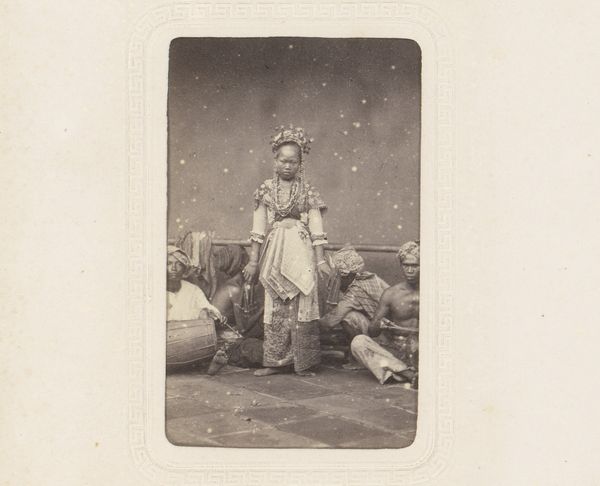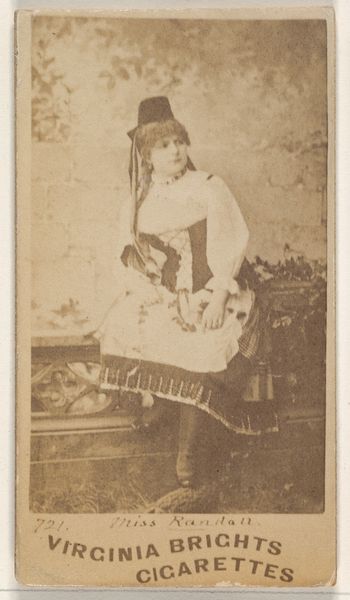
photography
#
portrait
#
photography
Dimensions: 8.6 x 12.1 cm. (3 3/8 x 4 3/4 in.)
Copyright: Public Domain
Editor: This is "La veste de Cygne," a portrait by Pierre-Louis Pierson from the 1860s. It's a photograph. The subject is a child or young person dressed in what looks like an extravagant swan's down jacket. The sepia tone gives it a very aged, almost dreamlike quality. What strikes you about its composition? Curator: Immediately, it is the arrangement of forms that captures my attention. The contrast between the soft, curvilinear shape of the swan's down and the more structured, darker garments creates a fascinating tension. What do you make of the placement of the figure in relation to the frame? Editor: It’s very centered, almost symmetrical. The way the light falls, it’s all very carefully constructed and not a snapshot. Does that centering have any effect on how we read the photograph? Curator: Indeed. The central placement invites a direct engagement with the figure. Notice how the background is devoid of detail, which draws attention to the figure's texture and form. Consider also the formal relationship between the figure's stance and the slight tilt of the head – a subtle asymmetry within an otherwise balanced composition. Is there any aspect of the materiality that seems noteworthy? Editor: I'm thinking about the texture; how tactile everything seems. It makes you almost want to reach out and touch it, even though it's a flat image. I didn't initially consider that. Thanks! Curator: And how might we read the materiality of the photograph in conjunction with the textures presented within the image? Consider, for instance, the process of collodion and its intrinsic relation to the tonality. Editor: It brings out the sense of faded grandeur and of age that makes this an object of the past, something really different from modern photography. This exercise highlighted that it isn't *what* is being depicted that moves the viewer but the balance of the various tones and lines. Curator: Precisely, this piece highlights how attention to detail of the components that constitute art may create new perspectives of an artwork as a whole.
Comments
No comments
Be the first to comment and join the conversation on the ultimate creative platform.
